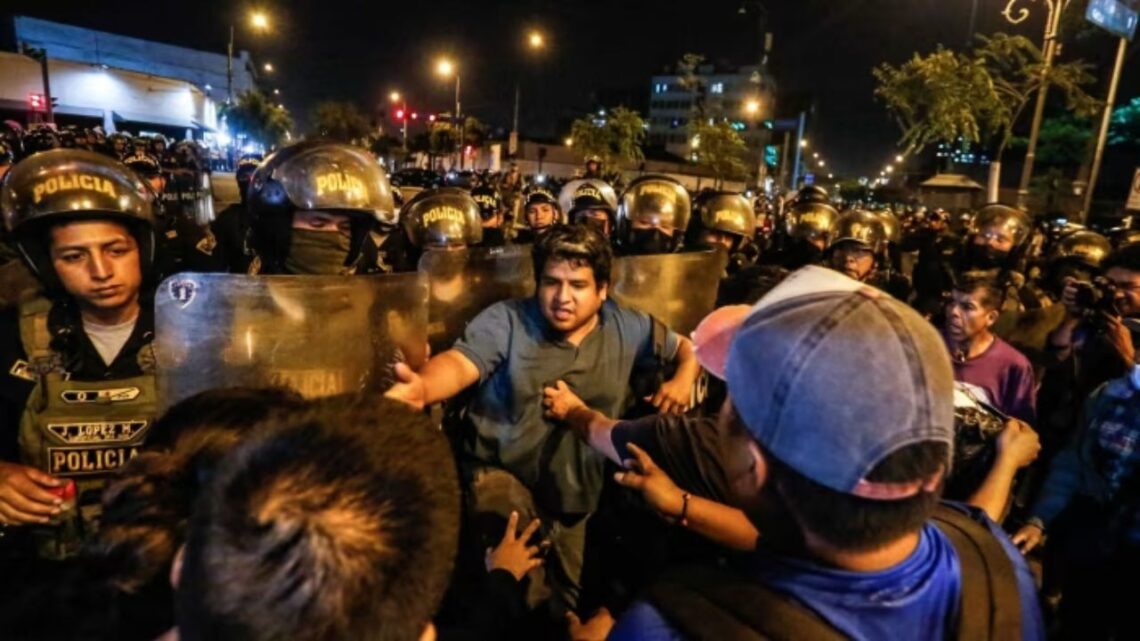Peru’s Gen Z–led movement is refusing to back down in the face of a 30-day state of emergency imposed in Lima and Callao.
The measure, introduced by President José Jerí, grants the military and police expanded powers, restricts freedom of movement and assembly, and is being justified as a response to a sharp rise in violent crime.
Protesters say the emergency is being used to stifle dissent rather than solve the crisis.
What triggered the emergency?
Officials point to a surge in crime, including a 35.9 % increase in murders year-over-year and escalating reports of extortion and gang activity.
The emergency is meant to allow security forces to act more aggressively. Protesters argue it is instead a broad tool to curb public protest and evade accountability.
The youth movement at the centre
Student groups and young activists have filled the streets of central Lima for weeks. After clashes near Congress earlier in the month, at least one protester was killed and over 100 people injured.
The victim, a young rapper-activist named Eduardo Ruiz, is widely viewed by protesters as a martyr. They say they will continue until real reform and justice are achieved.
What protesters want
The demonstrators are clear:
- The resignation of President José Jerí.
- The dissolution of Congress and an overhaul of political rules.
- Concrete steps against corruption and organised crime, rather than emergency measures alone.
Some groups also demand reversal of recent pension policy changes which they say signal a broader social neglect.
Key facts at a glance
| Item | Details |
|---|---|
| Legal measure | State of Emergency in Lima & Callao |
| Start / Duration | Announced Oct 22, 2025; for 30 days |
| Rights impacted | Movement and assembly restricted; military patrols |
| Stated rationale | Tackling rising crime; murder rate up ~35.9% |
| Casualties so far | At least 1 dead, 100+ injured in recent clashes |
| Lead groups | Gen Z collectives, student networks |
| Main demands | Jerí’s resignation, Congress dissolved, anti-corruption |
| Next steps | Youth groups plan further marches despite restrictions |
Why this matters
The confrontation pits Peru’s young, digitally organised activists against a government wielding extraordinary security powers.
Past emergencies in Peru have failed to reduce violence when they were not backed by structural reform.
The risk now is that the country’s social divide will deepen unless the state combines real anti-crime strategy with credible political change and investigations into protest abuses.
What to watch next
- Upcoming march dates announced by youth groups, including vigils in memory of Eduardo Ruiz.
- Whether the government narrows its emergency operations, investigates the October clashes, and commits to political reform.
- Signals from Congress: If there’s dialogue about reform/dissolution or if the hard line remains, pushing the crisis deeper.
Peru’s young protesters are sending a clear message: fighting crime and defending democracy must go hand in hand.
They argue that curfews and soldiers in the streets alone won’t fix corruption, impunity, or old-style politics.
With a 30-day emergency now in place, the stakes are high—either the government pairs security policy with meaningful reform and accountability, or Peru faces more marches, more confrontation, and a tougher journey back to trust.
